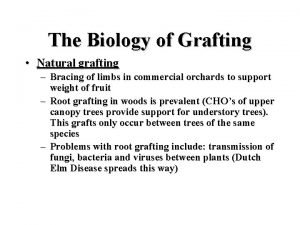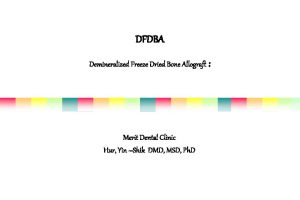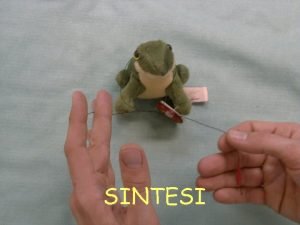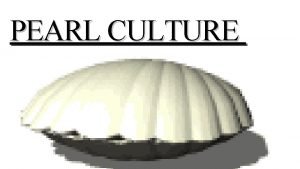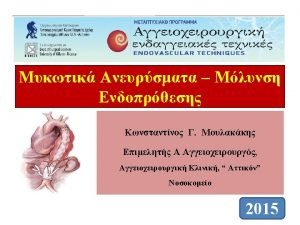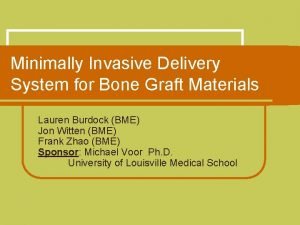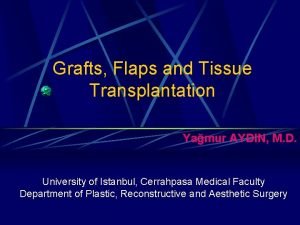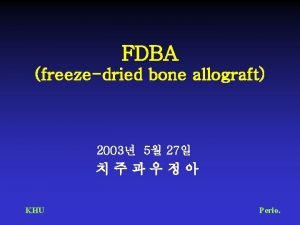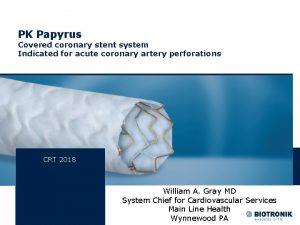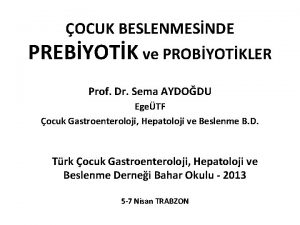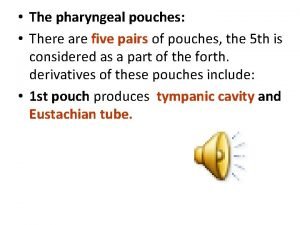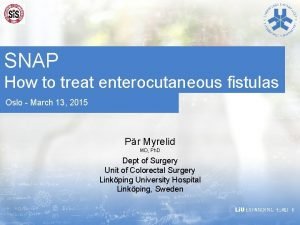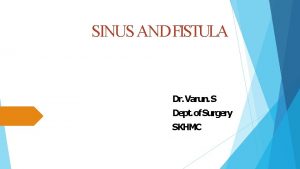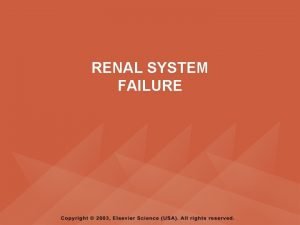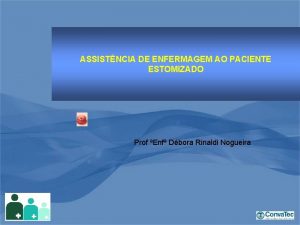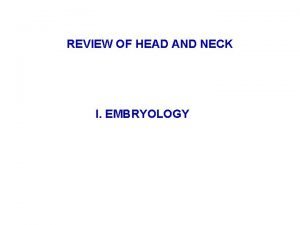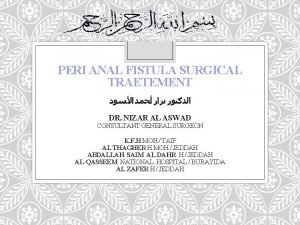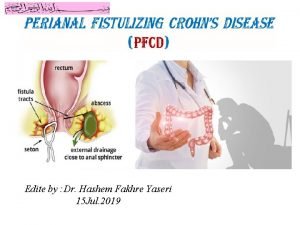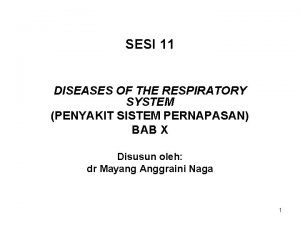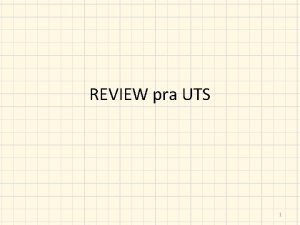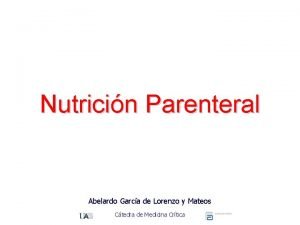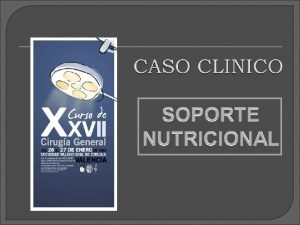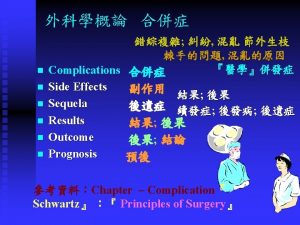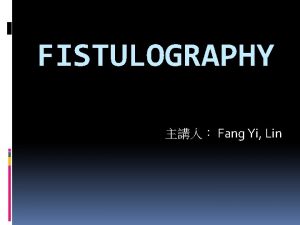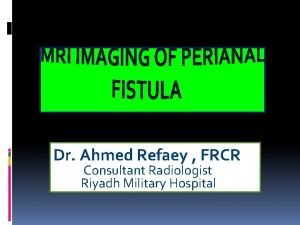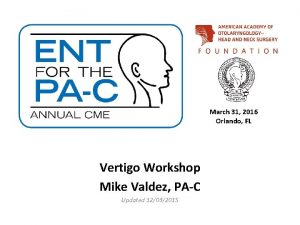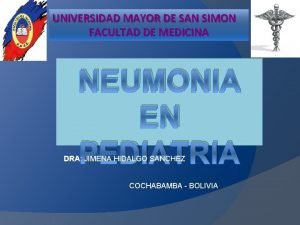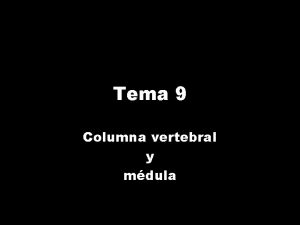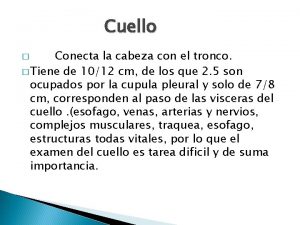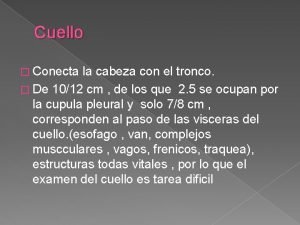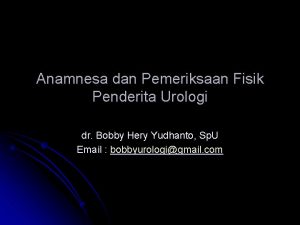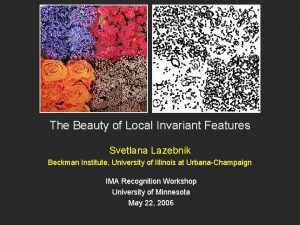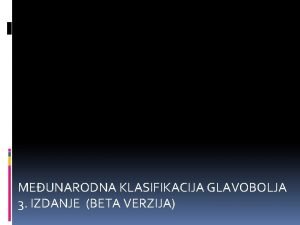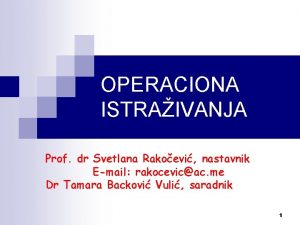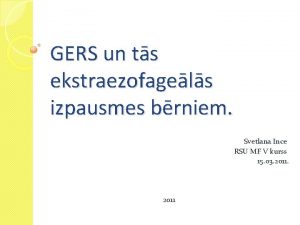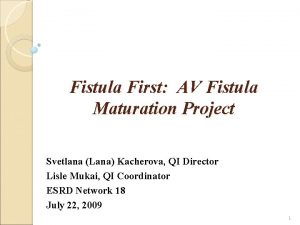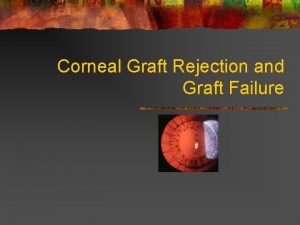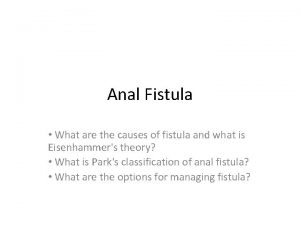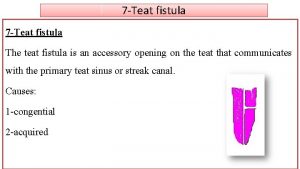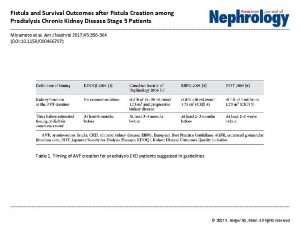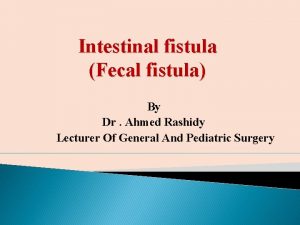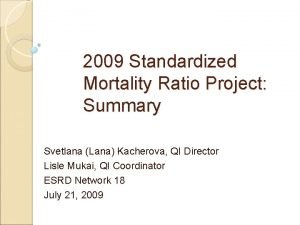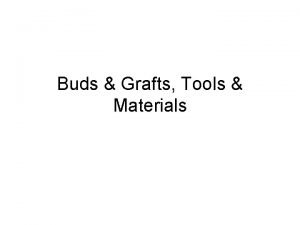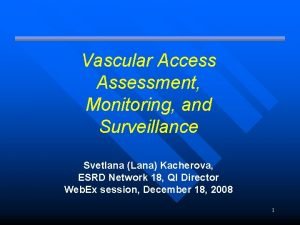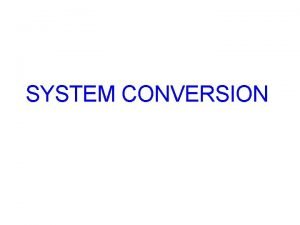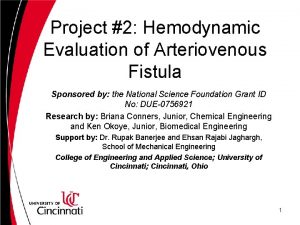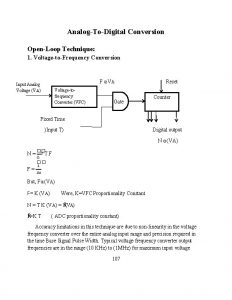Fistula First AV Graft Conversion Project Svetlana Lana




































































- Slides: 68

Fistula First: AV Graft Conversion Project Svetlana (Lana) Kacherova, QI Director Lisle Mukai, QI Coordinator ESRD Network 18 October 22, 2008 1

Special Acknowledgement for Content Contributions: FFBI Leadership Group RMS Lifeline, Inc. Da. Vita, Inc. John White, RN, Manager, Outreach and Education Laura Adams Irina Goykhman, RN, MBA Lynda K. Ball, RN, BSN, CNN QI Director, ESRD Network 16 2

Fistula First Breakthrough Initiative (FFBI) Partners n n n n n Dialysis facilities Dialysis patients Nephrologists Surgeons CMS ESRD Networks State Survey Agencies QIOs And many more! 3

“Fistula First” GOAL Goal is to maximize autogenous AVF construction & success rate…. . To achieve in the shorter term (2006) the initial K/DOQI minimum benchmark of AVF use in 40% of prevalent patients…. And in the long-term (2009), a 66% AVF rate in prevalent patients Additional Goal: Reduce Catheter Use! 4

Fistula First Goals (AVF Rates) n n CMS goal – 66% by June 30, 2009 Yearly Network 18 goal – 55. 1 % by June 30, 2009 Yearly Network Stretch Goal – 56. 0% by June 30, 2009 August 2008 AVF rates: NW 18 – 53. 7% US – 50. 7% 5

Tools & Best Practices: Fistula First Change Concepts 1. 2. 3. 4. 5. Routine CQI Review of vascular access Timely referral to nephrologist Early referral to surgeon for “AVF Only” Surgeon Selection Full range of appropriate surgical approaches 6. 7. 8. 9. 10. 11. Secondary AVFs in AFG patients AVF evaluation/placement in catheter pts Cannulation training Monitoring and maintenance Continuing Education Outcomes feedback 6

Improvement in Prevalent AVF Rates by ESRD Network FFBI AVF goal 66%66% 7

FFBI Accomplishments n n n n Website Updates Ongoing (fistulafirst. org) Calendar of upcoming vascular meetings (including Networks) Tab for Patient Education materials (patient and professionals) New interventionist videos uploaded Country-wide workshop for surgeons (May) • More Cannulation DVD reproduction in the works Distribution of new tools to Networks: FF Provider Resource List and FAQs FF Patient Resource List 8

FFBI Accomplishments (cont). Information sheets on Change Concepts #6 & #9 Monitoring and surveillance flowchart (CC#9) n Secondary AVF Protocols (CC#6) n Secondary AVF Sleeves Up Exam Checklist n Access Managers (CC#6) Additional Buttonhole slide set (sharp needles) n 9

10

FFBI Strategies to increase AVF rate and reduce catheter rate: n n n Networks should mount an effort to re- educate and provide feedback on Change Package, to all Providers and Clinics that are below the mean, including the laggards…… attempt to focus on gaps in education and performance Everyone focus on Change Concepts #6 & #7 – and related FF protocols (fistulafirst. org) 11

Strategies to increase Secondary Fistulae: n n n Re-evaluation of all patients for AVF options: Conversion of existing AVG to AVF, utilizing outflow vein of graft for AVF where feasible OR: Exam & Vessel Mapping for alternate options Secondary A-V Fistula Options K/DOQI guideline 29: Every patient should be evaluated for a secondary fistula after each episode of graft failure 12

V 626 QAPI Condition Statement n n The dialysis facility must develop, implement, maintain and evaluate an effective, data driven, quality assessment and performance improvement program with participation by the professional members of the interdisciplinary team. . . …The dialysis facility must maintain and demonstrate evidence of its quality improvement and performance improvement program for review by CMS 13

Condition 494. 110: Quality Assessment and Performance Improvement Project (QAPI) n n n n Interdisciplinary team (IDT) Must report problems to Medical Director and QAPI Outcome- focused Process continuous & on-going Use community accepted standards as targets Include patient satisfaction, infection control, medical injuries & medication errors Plan/Do/Check/Act: Close the loop! 14

PDCA /PDSA Style ACT PLAN CHECK /STUDY DO 15

Interdisciplinary Team: Show Me The Progress 16

Performance Measures (V 629) Adequacy Kt/V, URR (V 630) Nutrition Albumin, body weight (V 631) Bone disease PTH, Ca+, Phos (V 632) Anemia Hgb, Ferritin (V 633)Vascular access Fistula, catheter rate (V 634) Medical errors Frequency of specific errors V 635) Reuse Adverse outcomes (V 636) Pt satisfaction Survey scores (V 637) Infection control Infections, vaccination status 17

Monitoring Performance Improvement (V 638) The facility must: n Continuously monitor its performance n Take actions that result in performance improvement n Track to assure improvements are sustained over time 18

Inclusion Criteria for Participating Facilities AVF rate < 50% (April SIMS data) n Highest percentage and number of AV Grafts n Patients census > 50 patients n Administrative support: All intervention facilities have a stable leadership n 19

Exclusion Criteria Patient census < 50 patients n Facilities already included in another QIWP project with the Network n 20

ENVIRONMENTAL SCAN RESULTS 21

600 Number of AV Grafts within the AVG Conversion Project Facilities 500 Total # AV Grafts 400 300 200 100 0 Upper Arm Graft # Of specified AVG Lower Arm Graft Leg Graft Other Graft Total # of Grafts # Of Grafts that have clotted at least once since created from the specied AVGs 22

Stenosis Monitoring Method Conducted by AV Graft Conversion Facilities (As of June 30, 2008) 7 6 Number of Facilities 5 4 3 2 1 0 DVP (Dynamic Venous Pressure) Transonics Access Flow Doppler Study # Of facilities conducting method 23

Frequency of Stenosis Monitoring 7 Number of Facilities Monitoring at specified frequency 6 5 4 3 2 1 0 DVP (Dynamic Venous Pressure) Every Treatment Transonics Monthly Access Flow When a problem occurs Doppler Study Weekly Quarterly 24

14 12 # Of Facilities 10 8 6 4 2 0 Patient evaluated for Secondary AVF at the time of intervention for detected stenosis. YES NO Performs "Sleeves Up" technique Did not answer 25

“Sleeves Up” Exam Followed by Fistulogram 26

Planning for a secondary AVF is critical 27

TIMING of Conversion AVG to a Secondary AVF n 1 st AVG failure triggers evaluation for conversion to a secondary AVF—and a plan is established…. . n 2 nd AVG failure triggers conversion to an AVF using the fistulogram from the AVG study to evaluate the outflow veins 28

Continuum of Vascular Access Care Look, Listen, Feel Assessment Monitoring and Surveillance Vascular Access Program CQI Static pressure DVP Recirculation Interventions “Everyday” Every shift, Every patient Documentation Angioplasty Fistulagram Thrombectomy 29

Is the Access Working Properly? Clearances (URR) greater than 65 n Access flow greater than 600 n Venous pressure at 200 BRF less than 125 n Able to run prescription n Other signs and symptoms of access pathology n – Recirculation – Difficulty cannulating and pain in the access – Changes in thrill and bruit – Prolonged bleeding post-dialysis 30

Flow Methods in Dialysis Access n n n n n Duplex Doppler Ultrasound (DDU) Magnetic Resonance Angiography (MRA) Variable Flow Doppler Ultrasound Dilution (Transonics): UDT Crit-Line III or Crit-Line II Glucose Pump Infusion Urea Dilution Differential Conductivity (Gambro) (HDM) In-line Dialysate (FMC) - DD 31

Color-Flow Doppler Outpatient radiological procedure done quarterly n Also called duplex ultrasound or duplex Doppler study n Evaluates access flow patterns as well as areas of access stenosis n 32

Ultrasound Dilution Technique (Transonics) Conducted quarterly or as necessary n AKA Crit-Line III or Crit-line TKA n Very popular, but not all facilities have transonics on-site n 33

Dynamic Venous Pressure (DVP) Conducted and recorded at the beginning of each treatment at a specified blood flow rate using specified/consistent needle size n Non-standardized dynamic venous pressure are considered as unacceptable monitoring method by the K/DOQI workgroup n Acceptable method for AVFs only! (KDOQI 2006) n 34

Static Venous Pressure (SVP) Following a unit-specific procedure for measurement of venous and arterial measures at zero blood flow n Conducted at least every 2 weeks n Measurements plugged into mathematical formula n Ratio > 0. 5 is considered abnormal n Refer for fistulagram after 3 abnormal readings n 35

Other Methods On-Line-Clearance (OLC) – conducted quarterly – Fresenious technology) n Magnetic Resonance Angiography n 36

Medicare Guidelines for Referral n Venous outflow – – – – – Elevated venous pressure Prolonged bleeding Decreased URR Decreased Kt/V Recirculation Swelling of the extremity Pulsatile graft Loss of thrill Aneurysms Difficult or painful cannulation n Arterial inflow – Low pressure in graft when outflow is occluded – Ischemic changes in extremity – Diminished intra-access flow (AKA: arterial pulling negative) 37

Aims to Action: Conducting QAPI utilizing Rapid-Cycle Improvement

What is Rapid Cycle Improvement? n Variant of process improvement that: relies on existing knowledge – dramatically shortens discovery process – works on “rapid trial & learn” method – relies heavily on action –

Model for Improvement What are we trying to accomplish? How will we know that a change is an improvement? What changes can we make that will result in an improvement? Aim Act Plan Stud y Do

Root-Cause ANALYSIS (Fishbone Diagram) Determine the problem and create a problem statement (effect). Write it at the right center of the chart n Brainstorm the major categories of causes of the problem. Write them as the main branches steaming from the center line n Brainstorm all possible causes of the problem. Ask “Why did this happen? ” about each cause. n

Root-Cause ANALYSIS (Fishbone Diagram – cont). Write sub-causes stemming from the category of causes n Collect data to confirm root-cause n If no further causes can be identified, then you found the root causes of the problem n


Plan-Do-Study-Act n n Plan – Identify Opportunity and plan for change Do – Implement the Change on a small scale Study – Use data to analyze for the change and determine whether it made a difference Act – If the change was successful, implement the plan and continuously monitor results. If the change did not work – start the process again.

Model for Improvement What are we trying to accomplish? How will we know that a change is an improvement? What changes can we make that will result in an improvement? Aim Act Plan Stud Do y

Developing Your Aim § Write a clear statement of aim--make the target for improvement unambiguous § Include numeric goals § Set “stretch” aims § Focus on issues that are important to your organization - choose appropriate goals

Developing Your Aim § Improvement relies on intention to improve § Senior leaders set & align aim with strategic goals (involve Medical Director!) § Agreement on aim is critical § Include a specific time frame for accomplishing your aim

Examples of Aims n n 100% of all dialysis patients with failing grafts will be converted to secondary fistulae by XYZ date To increase the number of patients utilizing AVF as a primary vascular access for hemodialysis by 6 percentage points between June and December 2007

Project Goal: Decrease in the AVG rate of at least 4 percentage points within 8 months (October 2008 – May 2009) within the group of participating facilities by converting AVGs to AVFs. n Primary target patients: lower forearm AVG with a history of at least one clotting episode. n 49

Three Ingredients of an Effective Team System Leadership Technical Expertise Day-to-day Leadership

Establishing Your Team n Have day-to-day, system, and technical expertise – Day-to-day leader gives at least 20% (loses sleep) – System leader can arrange for the resources to do the work – Technical experts know the subject matter--often bedside people n Use interdisciplinary team (IDT)

Interdisciplinary Team: Show Me The Progress 52

Applying The Model: Aims to Action n Work together in twos or threes (Vascular Access Coordinator is the leader) n Identify your project n Identify: – A strong, clear aim statement to guide your improvement work on your project – An aim that has a numeric, stretch goal included – How you will form your team using the three ingredients of an effective team n Give feedback to each other in the large

Using Data for Improvement


Model for Improvement What are we trying to accomplish? How will we know that a change is an improvement? What changes can we make that will result in an improvement? Measure Act Plan Stud y Do

Measurement Guidelines n The key measures should clarify the aim and make it tangible n Use outcome and process measures n Integrate measurement into the daily routine n Use qualitative as well as quantitative data n Seek usefulness, not perfection

Measures: n Process: n Outcome: n Identify patients with lower forearm AVG Perform “sleeves up “ Refer for vessel mapping – support documentation re: access problems Obtain Vessel mapping results and act Monitor newly created AVF for maturation n Decrease in number of AVG Increase in number of AVF (converted from AVG) n n n 58

Model for Improvement What are we trying to accomplish? How will we know that a change is an improvement? What changes can we make that will result in an improvement? Select Changes Act Plan Stud Do y

Selecting Changes Blatantly steal: Use the literature, the experience of others, hunches and theories (FFBI suggestions) n Be strategic: Set priorities based on the aim, known problems, and feasibility n

Objective of the Test: Change or No Change? Probably Change Test Redesign Eliminate Reduce Deliver Implement Probably No Change Recruit Distribute Continue Examine Discuss Teach

Selecting Changes n Test the changes on a small scale - “By next Tuesday” - Capitalize on curiosity - Have a bias for the “doable” § Use change concepts -Simplify -Error-proof -Minimize the hand-offs

To Be Considered a Real Test was planned, including a plan for collecting data. n Plan was attempted and data was collected. n Time was set aside to analyze data and study the results. n Action was taken, based on what was learned. n

Two Key Points n Small scale small change n Success (or failure) in one PDSA cycle success or failure of the project

Project Changes and Steps Identify all patients with lower AVG previously clotted at least once n Perform Sleeves Up exam and refer for the vessel mapping n Be persistent – educate patients at every opportunity n Engage Medical Director! n 65

Network Responsibilities: Project Leader (change agent) n Supply the templates for RCA & PDSA n Supply toolkits to facilities & evaluate their usefulness n Provide monthly feedback (Vascular Access SIMS reports) n Conduct monthly phone interviews to obtain facility-specific data 66 n Facility site visits for strugglers n

Facilities Responsibilities: Return agreement letter (signed by MD) n Return scans ASAP (those who did not return yet) n RCA & PDSA due to the Network by November 14, 2008 (PDSA must be signed by MD) n Review toolkit and identify tools that would work in your facility n Follow the project timelines n 67

We are all partners! Thank you! For questions please contact: Svetlana (Lana) Kacherova, RN, MPH, CPHQ Quality Improvement Director ESRD Network 18 323 -962 -2020 skacherova@nw 18. esrd. net 68
 Bridge graft
Bridge graft Obwegeser alveoloplasty
Obwegeser alveoloplasty Dfdba graft
Dfdba graft Dr neil dsouza
Dr neil dsouza Graf tak berarah
Graf tak berarah Sutura continua sopraggitto
Sutura continua sopraggitto Autologous bone graft definition
Autologous bone graft definition Calcaneal bone graft
Calcaneal bone graft Artificial pearl formation
Artificial pearl formation Pathophysiology of aortic aneurysm ppt
Pathophysiology of aortic aneurysm ppt Bone classification
Bone classification Eye scar
Eye scar Harvest aspect
Harvest aspect Free gingival graft indications
Free gingival graft indications Bone graft delivery device
Bone graft delivery device Bypass graft surgery
Bypass graft surgery Mayn graft
Mayn graft Dfdba vs fdba
Dfdba vs fdba Pk papyrus
Pk papyrus Graft-versus-host hastalığı
Graft-versus-host hastalığı Trabacule
Trabacule Norian bone graft substitute
Norian bone graft substitute 3 4 pharyngeal pouch
3 4 pharyngeal pouch Fistula snap
Fistula snap Goodsall law fistula
Goodsall law fistula Fistula vs shunt
Fistula vs shunt Anomalies of vitellointestinal duct
Anomalies of vitellointestinal duct Reborde costal
Reborde costal Ti fistula
Ti fistula Embryology of branchial cyst
Embryology of branchial cyst Goodsall law fistula
Goodsall law fistula Carotid cavernous fistula
Carotid cavernous fistula Simple anal fistula
Simple anal fistula Pyothorax without fistula
Pyothorax without fistula Otokonia adalah
Otokonia adalah Define enterocutaneous fistula
Define enterocutaneous fistula Fistula enterocutanea
Fistula enterocutanea Fistula enterocutanea
Fistula enterocutanea Hepatoduodenal fistula
Hepatoduodenal fistula Fistula
Fistula Perianal fistula
Perianal fistula Av fistula
Av fistula Nystagmus cows
Nystagmus cows Fistula
Fistula Fistula test ent
Fistula test ent Fistula vesiko vagina
Fistula vesiko vagina Clotimoxazole
Clotimoxazole Malformacion venosa
Malformacion venosa Fistula clasificacion
Fistula clasificacion Fistula clasificacion
Fistula clasificacion Signo de holzknecht
Signo de holzknecht Fistula tiroglosa
Fistula tiroglosa Chevosteck
Chevosteck Dr bobby urologi
Dr bobby urologi Svetlana lazebnik
Svetlana lazebnik Differenziertes schmerzassessment
Differenziertes schmerzassessment Dr svetlana stanisic
Dr svetlana stanisic Dr zeljko boskovic neurolog
Dr zeljko boskovic neurolog Prof dr svetlana stanisic
Prof dr svetlana stanisic Svetlana ledyaeva
Svetlana ledyaeva Svetlana berdyugina
Svetlana berdyugina Svetlana drachova
Svetlana drachova žitorađa ceca
žitorađa ceca Svetlana ledyaeva
Svetlana ledyaeva Dr svetlan lanka
Dr svetlan lanka Svetlana rakocevic
Svetlana rakocevic Svetlana ledyaeva
Svetlana ledyaeva Fundoplikācija
Fundoplikācija Svetlana gurvich
Svetlana gurvich
